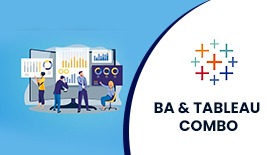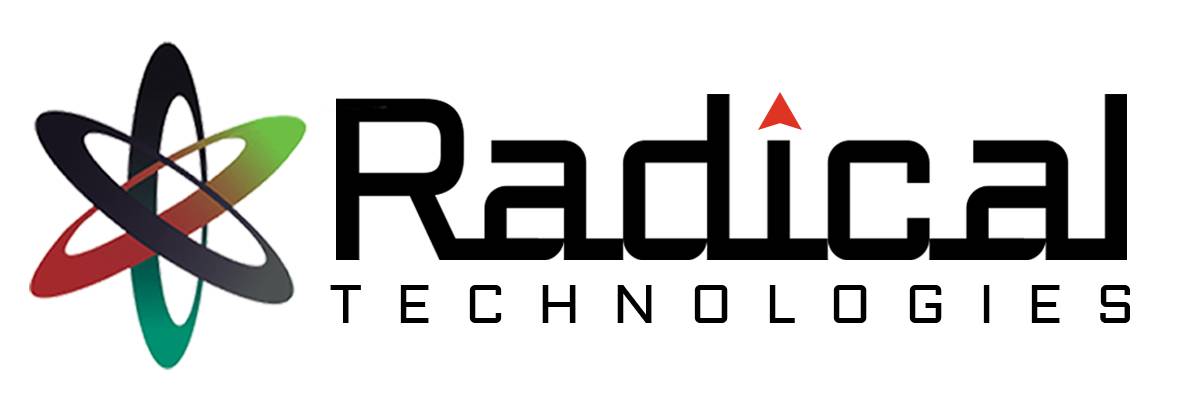- Home
- About Us
- Courses
- Combo Courses
- Programming Combo Courses
- Non Programming Combo Courses
- Linux & Cloud Combo
- Linux & DBA Combo
- AWS & Devops Combo
- Salesforce Combo
- Azure Admin Combo
- Azure Cloud & Azure Devops Combo
- Tableau Informatica Combo
- Power BI Informatica Combo
- Power BI & MSBI Combo
- Salesforce Manual Testing Combo
- Salesforce Tableau Combo
- Data Analytics Combo
- MCSA Azure Combo
- Powerplatform Combo
- ADF & Power BI Combo
- BA & Tableau Combo
- PG Diploma
- Online Schedule
- Offline schedule
- Job Openings
- Certifications
- Contact Us
BA & TABLEAU COMBO

A combination of a Bachelor of Arts (BA) degree and Tableau skills can be a powerful asset in the professional world, particularly in fields related to data analysis, business intelligence, and visual storytelling. In summary, the combination of a Bachelor of Arts degree and Tableau proficiency creates a unique skill set that bridges the gap between data analysis and effective communication.
3521 Satisfied Learners
BA & TABLEAU COMBO Training in Pune/ Online
Courses Included:-
Business Analytics (CBAP)+ Tableau
Duration of Training : 4 months
Batch type : Weekdays/Weekends
Mode of Training : Classroom/Online/Corporate Training
Why Radical Technologies
BUSINESS ANALYST-CBAP
COURSE CONTENT :
Chapter-1 : Introduction
Introduction – Purpose of the BABOK® Guide – What is Business Analysis? – Who is a Business Analyst? – Structure of the BABOK® Guide
Chapter-2 : Business Analysis Key Concepts
The Business Analysis Core Concept Model™ – Key Terms – Requirements Classification Schema – Stakeholders – Requirements and Designs
Chapter-3 : Business Analysis Planning and Monitoring
Plan Business Analysis Approach – Plan Stakeholder Engagement – Plan Business Analysis Governance – Plan Business Analysis Information Management – Identify Business Analysis Performance Improvements
Chapter-4 : Elicitation and Collaboration
Prepare for Elicitation – Conduct Elicitation – Confirm Elicitation Results – Communicate Business Analysis Information – Manage Stakeholder Collaboration
Chapter-5 : Requirements Life Cycle Management
Trace Requirements – Maintain Requirements – Prioritize Requirements – Assess Requirements Changes – Approve Requirements
Chapter-6 : Strategy Analysis
Analyze Current State – Define Future State – Assess Risks – Define Change Strategy
Chapter-7 : Requirements Analysis and Design Definition
Specify and Model Requirements – Verify Requirements – Validate Requirements – Define Requirements Architecture – Define Design Options – Analyze Potential Value and Recommend Solution
Chapter-8 : Solution Evaluation
Measure Solution Performance – Analyze Performance Measures – Assess Solution Limitations – Assess Enterprise Limitations – Recommend Actions to Increase Solution Value
Chapter-9 : Underlying Competencies
Analytical Thinking and Problem Solving – Behavioural Characteristics – Business Knowledge – Communication Skills – Interaction Skills – Tools and Technology
Chapter-10 : Techniques
Acceptance and Evaluation Criteria – Backlog Management – Balanced Scorecard – Benchmarking and Market Analysis – Brainstorming – Business Capability Analysis – Business Cases – Business Model Canvas – Business Rules Analysis – Collaborative Games – Concept Modelling – Data Dictionary – Data Flow Diagrams – Data Mining – Data Modelling – Decision Analysis – Decision Modelling – Document Analysis – Estimation – Financial Analysis – Focus Groups – Functional Decomposition – Glossary – Interface Analysis – Interviews – Item Tracking – Lessons Learned – Metrics and Key Performance Indicators (KPIs) – Mind Mapping – Non-Functional Requirements Analysis – Observation – Organizational Modelling – Prioritization – Process Analysis – Process Modelling – Prototyping – Reviews – Risk Analysis and Management – Roles and Permissions Matrix – Root Cause Analysis – Scope Modelling – Sequence Diagrams – Stakeholder List, Map, or Personas – State Modelling – Survey or Questionnaire – SWOT Analysis – Use Cases and Scenarios – User Stories – Vendor Assessment – Workshops
Chapter-11 : Perspectives
The Agile Perspective – The Business Intelligence Perspective – The Information Technology Perspective – The Business Architecture Perspective – The Business Process Management Perspective
TABLEAU
COURSE CONTENT :
1. Introduction and Getting Started
- Why Tableau? Why Visualization?
- The Tableau Product Line
- Level Setting – Terminology
- Getting Started – creating some powerful visualizations quickly
- Review of some Key Fundamental Concepts
- What is Tableau?
- What does the Tableau product suite comprise of? How Does Tableau Work?
- Tableau Architecture
- Connecting to Data & Introduction to data source concepts
- Understanding the Tableau workspace
- Dimensions and Measures
- Data Types & Default Properties
- Tour of Shelves & Marks Card
- Using Show Me
- Saving and Sharing your work-overview
2. Filtering, Sorting & Grouping
Filtering, Sorting and Grouping are fundamental concepts
when working with and analyzing data. We will briefly review these topics as they apply to Tableau
- Advanced options for filtering and hiding
- Understanding your many options for ordering and grouping your data: Sort, Groups, Bins, Sets
- Understanding how all of these options inter-relate
3. Working with Data
In the Advanced class, we will understand the difference between joining and blending data, and when we should do each. We will also consider the implications of working with large data sets, and consider options for when and how to work with extracts and the data engine. We will also investigate best practices in “sharing” data sources for Tableau Server users.
- Data Types and Roles
- Dimension versus Measures
- Data Types
- Discrete versus Continuous
- The meaning of pill colors
- Database Joins
- Data Blending
- Working with the Data Engine / Extracts and scheduling extract updates
- Working with Custom SQL
- Adding to Context
- Switching to Direct Connection
4. Working with Calculated Data and Statistics
In the Fundamentals Class, we were introduced to some basic calculations: basic string and arithmetic calculations and ratios and quick table calculations. In the Advanced class, we will extend those concepts to understand the intricacies of manipulating data within Tableau
5. A Quick Review of Basic Calculations
Arithmetic Calculations
String Manipulation
Date Calculations
Quick Table Calculations
Custom Aggregations
Custom Calculated Fields
Logic and Conditional Calculations
Conditional Filters
6. Advanced Table Calculations
Understanding Scope and Direction
Calculate on Results of Table Calculations
Complex Calculations
Difference From Average
Discrete Aggregations
Index to Ratios
7. Working with Parameters
In the Fundamentals class, we were introduced to parameters – How to create a parameter and use it in a calculation. In the Advanced class, we will go into more details on how we can use parameters to modify our title, create What-If analysis, etc
Parameter Basics
Data types of parameters
Using parameters in calculated fields
Inputting parameter values and parameter control options
Advanced Usage of Parameters
Using parameters for titles, field selections, logic statements, Top X
8. Building Advanced Chart Types and Visualizations/Tips & Tricks
This topic covers how to create some of the chart types and visualizations that may be less obvious in Tableau. It also covers some of the more common tips & tricks/techniques that we use to assist customers in solving some of their more complex problems.
- Bar in Bar
- Box Plot
- Bullet Chart
- Custom Shapes
- Gantt Chart
- Heat Map
- Pareto Chart
- Spark Line
- KPI Chart
9. Best Practices in Formatting and Visualizing
- Formatting Tips
- Drag to Legend
- Edit Legend
- Highlighting
- Labeling
- Legends
- Working with Nulls
- Table Options
- Annotations and Display Options
- Introduction to Visualization Best Practices
10. Data Analysis And Reporting
- Data Analysis using Pivot Tables – use of row and column shelf, values and filters
- Difference between data layering and cross tabulation, summary reports, advantages and limitations
- Change aggregation types and summarisation
- Creating groups and bins in pivot data
- Concept of calculated fields, usage and limitations
- Changing report layouts – Outline, compact and tabular forms
- Show and hide grand totals and subtotals
- Creating summary reports using pivot tables
11. SQL : Data Manipulation (DML Commands)
- Insert, Update & Delete statements
- Select statement – Subsetting, Filters, Sorting. Removing Duplicates, grouping and aggregations etc
- Where, Group By, Order by & Having clauses
- SQL Functions – Number, Text, Date, etc
- SQL Keywords – Top, Distinct, Null, etc
- SQL Operators – Relational (single valued and multi valued), Logical (and, or, not), Use of wildcard operators and wildcard characters, etc
12. SQL : Accessing Data From Multiple Tables Using SELECT
- Append and JoinsUnion and Union All – Use & constraints
- Intersect and Except statements
- Table Joins – inner join, left join, right join, full join
- Cross joins/cartesian products, self joins, natural joins etc
- Inline views and sub-queries
- Optimizing your work
13. Tableau : Data Handling & Summaries
- Date Aggregations and Date parts
- Cross tab & Tabular charts
- Totals & Subtotals
- Bar Charts & Stacked Bars
- Line Graphs with Date & Without Date
- Tree maps
- Scatter Plots
- Individual Axes, Blended Axes, Dual Axes & Combination chart
- Parts of Views
- Sorting
- Trend lines/ Forecasting
- Reference Lines
- Filters/Context filters
- Sets
- In/Out Sets
- Combined Sets
- Grouping
- Bins/Histograms
- Drilling up/down – drill through
- Hierarchies
- View data
- Actions (across sheets)
14. Tableau : Building Advanced Reports/ Maps
- Explain latitude and longitude
- Default location/Edit locations
- Building geographical maps
- Using Map layers
15. Tableau : Calculated Fields
- Working with aggregate versus disaggregate data
- Explain – #Number of Rows
- Basic Functions (String, Date, Numbers etc)
- Usage of Logical conditions
16. Tableau : Table Calculations
- Explain scope and direction
- Percent of Total, Running / Cumulative calculations
- Introduction to LOD (Level of Detail) Expressions
- User applications of Table calculations
17. Tableau : Parameters
- Using Parameters in
- Calculated fieldsBins
- Reference Lines
- Filters/Sets
- Display Options (Dynamic Dimension/Measure Selection)
- Create What-If/Scenario analysis
18. Tableau : Building Interactive Dashboards
- Combining multiple visualizations into a dashboard (overview)
- Making your worksheet interactive by using actions
- Filter
- URL
- Highlight
- Complete Interactive Dashboard for Sales & Services
19. Tableau : Formatting
- Options in Formatting your Visualization
- Working with Labels and Annotations
- Effective Use of Titles and Captions
20. Tableau : Working With Data
- Multiple Table Joins
- Data Blending
- Difference between joining and blending data, and when we should do each
- Toggle between to Direct Connection and Extracts
Learn BA & Tableau Combo – Course in Pune with Training, Certification & Guaranteed Job Placement Assistance!
Online Batches Available for the Areas
Ambegaon Budruk | Aundh | Baner | Bavdhan Khurd | Bavdhan Budruk | Balewadi | Shivajinagar | Bibvewadi | Bhugaon | Bhukum | Dhankawadi | Dhanori | Dhayari | Erandwane | Fursungi | Ghorpadi | Hadapsar | Hingne Khurd | Karve Nagar | Kalas | Katraj | Khadki | Kharadi | Kondhwa | Koregaon Park | Kothrud | Lohagaon | Manjri | Markal | Mohammed Wadi | Mundhwa | Nanded | Parvati (Parvati Hill) | Panmala | Pashan | Pirangut | Shivane | Sus | Undri | Vishrantwadi | Vitthalwadi | Vadgaon Khurd | Vadgaon Budruk | Vadgaon Sheri | Wagholi | Wanwadi | Warje | Yerwada | Akurdi | Bhosari | Chakan | Charholi Budruk | Chikhli | Chimbali | Chinchwad | Dapodi | Dehu Road | Dighi | Dudulgaon | Hinjawadi | Kalewadi | Kasarwadi | Maan | Moshi | Phugewadi | Pimple Gurav | Pimple Nilakh | Pimple Saudagar | Pimpri | Ravet | Rahatani | Sangvi | Talawade | Tathawade | Thergaon | Wakad


